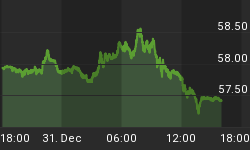It’s back. The crucial correlation returned to the gold market. Does it herald important shifts in trends?
Real Interest Rates Are Back in Town
One of the biggest developments in the gold market during the first four months of 2018 was the breakdown of the traditional negative correlation between real interest rates and the price of bullion. As one can see in the chart below, the price of gold was uncorrelated or even moved in tandem with long-term, inflation-indexed U.S. Treasury yields in Q1 2018.

(Click to enlarge)
Chart 1: Price of gold (yellow line, left axis, P.M. London Fix) and U.S. real interest rates (red line, right axis, yields on 10-year Treasury Inflation-Indexed Security) in 2018.
However, the correlation has recently turned negative again. This is why we warned our Readers in the latest edition of the Market Overview: “if the old relationship comes back again, the price of gold may go south.” We argued that the weak U.S. dollar supported bulls, despite rising interest rates. But we cautioned investors that “at some point, the greenback may rebound – and then, the negative relationship between the U.S. real interest rates and the price of gold may return.” This is exactly what happened. The greenback has broken out of its downward spiral and the negative correlation between the yellow metal and real interest rates reestablished itself. In consequence, the price of gold declined in mid-April.
What’s Next for Dollar?
Now, the question arises: what’s next? If the rally in the U.S. dollar continues, gold will come under sustained pressure. However, investors shouldn’t be deceived by the recent greenback’s rise. Surely, rising interest rates and the hawkish Fed support the U.S. dollar. Indeed, yield differentials favor continued strength in the dollar versus the euro, i.e., the biggest component of the U.S. Dollar Index. But that was also the case last year, and the greenback fell despite the widening divergence in interest rates in the U.S. and in the Eurozone. Related: Trump Backtracks On Big Pharma Crackdown
You see, international and domestic politics operate in favor of the dollar. The U.S. – or at least President Trump – wants a weaker greenback. The Fed also prefers to have a weaker currency, to get inflation in line with the target. We mean here that the U.S. fiscal, foreign and trade policies are shrouded in uncertainty, which puts the American currency under pressure. Not to mention rising fiscal deficits. The recent U.S. withdrawal from the 2015 international nuclear deal with Iran and new sanctions also increase uncertainty, adding to the bearish side of the greenback and the bullish side of the shiny metal. In the February edition of the Market Overview, we showed that unpredictable and clumsy foreign policy of the new administration deteriorates the perception of the U.S. as a reliable ally, which reduces the dollar’s value.
Implications for Gold
And what does it all mean for the gold market? Well, last week the U.S. dollar retreated from its 2018 peak. It seems that the greenback’s run may be out of steam. Although the interest rate differential supports dollar (and investors shouldn’t neglect this fact), other factors, including the political landscape, are rather bearish for the greenback. The mixed balance may cause gold to remain in a relatively narrow trading range, at least unless its fundamentals or sentiment change radically.
However, the weak rebound in gold prices last week suggests that gold has some work to do on the downside. Similarly, the fundamental outlook is rather bearish in the medium term, at least more bearish than a few weeks ago. We mean here that the stock market correction has not turned into a crisis and the risk appetite has increased. The worries about trade wars have diminished, while inflation remains in check. If interest rates continue their upward move and their correlation with gold returns, the yellow metal will get into hot water. Stay tuned!
By Arkadiusz Sieron via Sunshine Profits
More Top Reads From Safehaven.com:

















